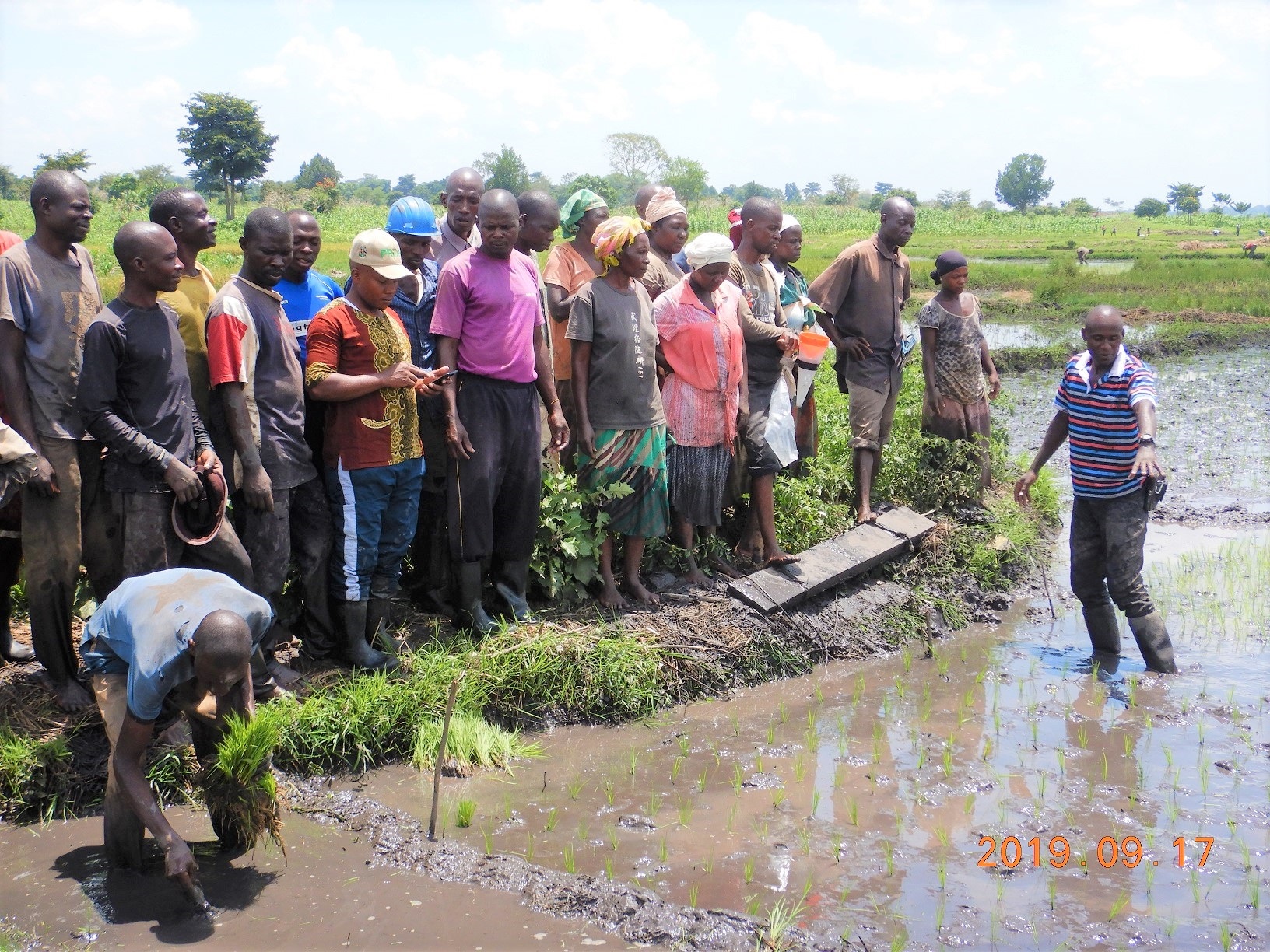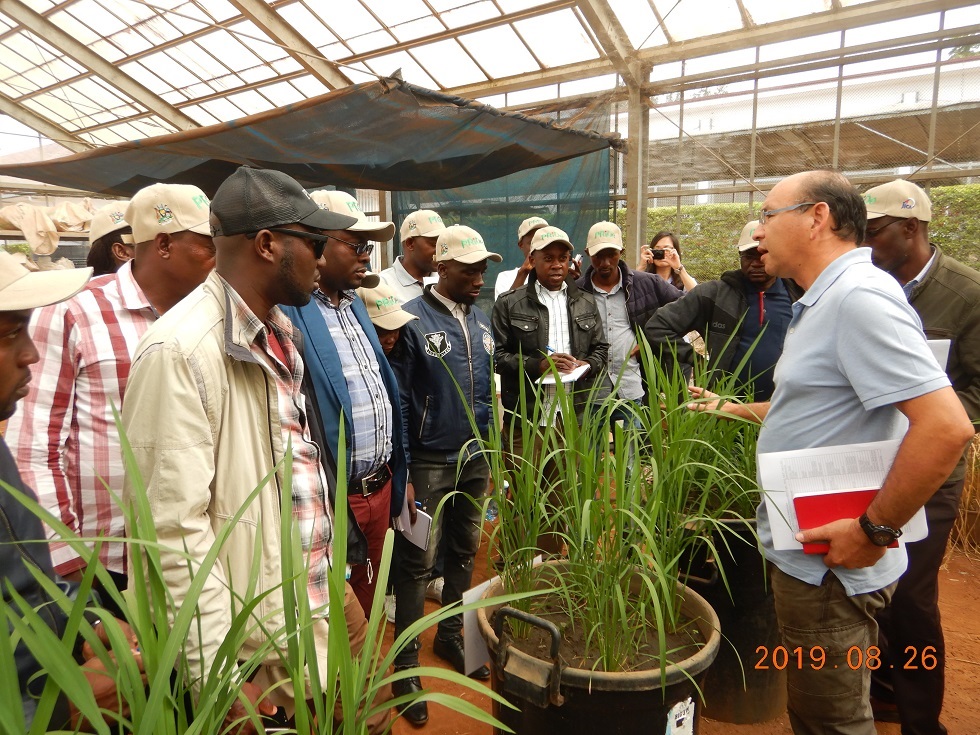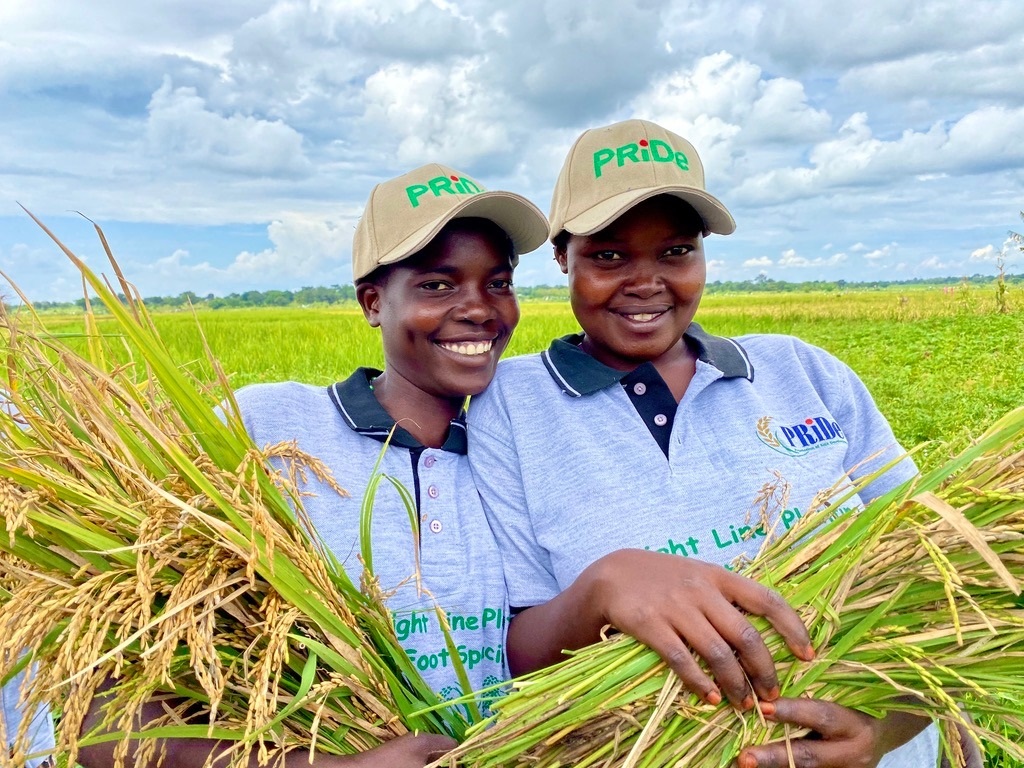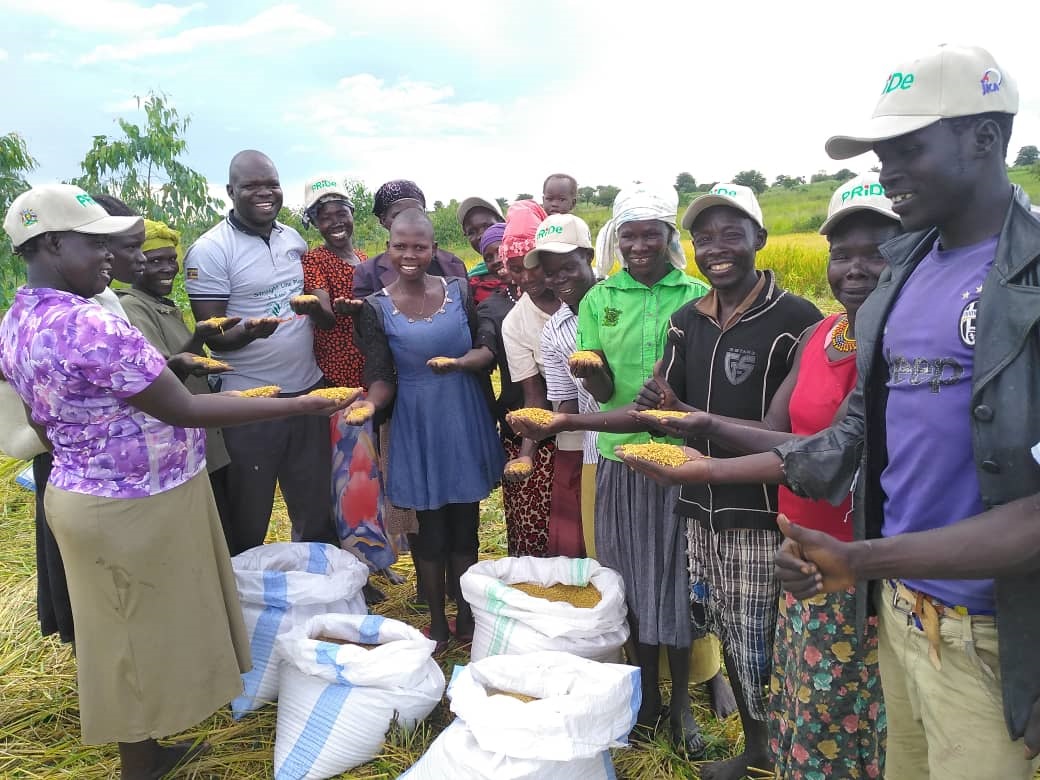Uganda Climate Smart Agricultural Transformation Project
Uganda Climate Smart Agriculture Transformation Project
Introduction
The Uganda Climate-Smart Agricultural Transformation Project (UCSATP) is a six (6) year implemented by the Ministry of Agriculture Animal Industry and Fisherries and its agencies the National Agricultural Research Organization (NARO); the National Animal Genetics Resources Centre and Data Bank (NAGRC &DB) and Uganda National Metereological Authority (UNMA).
Project Objective and Description
The objective of the project is to increase productivity, market access and resilience of select value chains in the project area and to respond promptly and effectively to an eligible crisis or emergency.
The project will support the Government of Uganda to identify, develop, and incentivize adoption of climate smart agriculture technologies and management practices that contribute to climate adaptation of agricultural value chains to sustainably increase productivity and household incomes while enhancing resilience to climatic shocks.
The following indicators will be used to track progress towards the attainment of the PDO:
- Project beneficiaries (Numbers), disaggregated by nationals, gender, host communities, and refugees.
- Land area (Hectares) under sustainable land management, including climate-smart practices because of project support, disaggregated by nationals, host communities, and refugees.
- Percentage increase in yields of selected value chains in metric tons per production unit, disaggregated by commodity/value chain.
- Percentage increase in volumes of agricultural products of selected value chains marketed by targeted beneficiaries, disaggregated by nationals, gender, host communities, and refugees.
Project Components
The project comprises five interlinked components
1. Strengthening Climate-Smart Agricultural Research, Seed and Agro-Climatic Information Systems
This component will support the development, validation, packaging, and dissemination of context-specific climate-smart technologies and practices to target beneficiaries. The component will strengthen technical and institutional capacity to deliver technologies, support the development of the seed delivery systems, and provide agro-meteorological information services. It will facilitate investments in climate-resilient seed production and marketing systems.
2. Promoting Adoption of Climate-Smart Agriculture Technologies and Practices
The component will support investments for upscaling and adoption of climate-smart technologies and practices GHG mitigation, agricultural productivity, and incomes in project areas. Construction and equipping of the mechanization centres to increase uptake of agricultural mechanization and labor-saving technologies, Provision of Irrigation and Water for Agricultural Production, Animal disease control and Special interventions in Fisheries and Aquaculture.
3. Market Development and Linkages for Selected Value Chains
The component aims to improve access to remunerative markets through increased access to climate-smart harvesting, postharvest handling, storage, value addition, market linkage services, equipment, and infrastructure. Key investments in this component include rehabilitation of farm-to-market access roads/ chokepoints, purchase of cold chain and value addition equipment
4. Contingency Emergency Response Component
This zero-cost component will finance eligible expenditures under the Immediate Response Mechanism in case of natural or man-made crises or disasters such as severe droughts, floods, specific pests and disease outbreaks, and severe economic shocks in Uganda
5. Project Management, Coordination, and Implementation
The component will support the management, monitoring, and evaluation of the project. It will strengthen the planning and coordination of activities supported by the project, as well as the monitoring of their implementation, financial management (FM) processes, program communication, and knowledge management
Project Coverage
The project will be implemented in target 69 districts across 13 agroecological zones of the country, including 7 refugee hosting districts. The selection of districts in the agroecological zones is based on climate change vulnerability of the watersheds, poverty levels at the subregional level, and watershed degradation.
Project Value Chains: 13 value chains have been selected and up to 4 value chains will be supported in each subregion.
| SUB-REGION | DISTRICT | VALUE CHAINS SUPPORTED PER SUB-REGION | |
| BUSOGA | Iganga Mayuge Buyende Kamuli Kaliro | Dairy Coffee Aquaculture/Fisheries Cocoa Poultry | |
| BUKEDI
| Budaka Butaleja Kibuku Pallisa Tororo | Mangoes Citrus Aquaculture &Fisheries Dairy Poultry | |
| ELGON
| Bulambuli Bududa Mbale Sironko Kween | Dairy Coffee Bananas Vegetables
| |
| TESO
| Bukedea Kaberamaido Katakwi Kumi Ngora Serere Kalaki | Aquaculture & Fisheries Beef Citrus Mangoes Dairy Poultry
| |
| KARAMOJA
| Abim Kaabong Kotido Nakapiripirit Napak Moroto | Beef Sorghum Cassava Soybean Aquaculture/Fisheries | |
| LANGO
| Apac Dokolo Amolatar Oyam Alebtong Otuke | Soybean Aquaculture & Fisheries, Mango Citrus Beef Poultry | |
| ACHOLI
| Agago Kitgum Pader Nwoya Omoro Lamwo | Soybean Beef Maize Aquaculture/Fisheries | |
| WESTNILE
| Adjumani* Zombo Yumbe Nebbi | Beef Soybean Mangoes Aquaculture/Fisheries | |
| ANKOLE
| Isingiro* Kazo Kiruhura Sheema Mitooma | Dairy Beef Banana Coffee Aquaculture/Fisheries | |
| KIGEZI
| Kabale Rukungiri Rubanda Kisoro | Dairy Aquaculture/Fisheries Bananas Coffee | |
| RWENZORI
| Bundibugyo Kamwenge* Ntooroko Kabarole Kyegegwa* | Dairy Coffee Beef Maize Cocoa Aquaculture/Fisheries | |
| BUNYORO
| Kibaale Kiryandongo* Kakumiro Kikuube*
| Dairy Beef Maize Coffee Aquaculture & Fisheries
| |
| BUGANDA
| Nakasongola Butambala Kyankwanzi Nakaseke Gomba Ssembabule Mubende | Dairy Beef Banana Coffee Aquaculture/Fisheries
|
NOTES
- TOTAL NUMBER OF DISTRICTS 69
- * REFUGEE HOSTING DISTRICTS
Project Beneficiaries
The project is expected to directly benefit about 760,000 households (3,900,000 individuals), and indirectly benefit approximately 1,900,000 households (9,500,000 individuals). Among these, beneficiaries from the non-refugee districts will be about 620,000 households and 60,000 refugee households and 80,000 refugee-hosting households. This represents 65% of the total population in the project districts.
Public disclosure notice for the Uganda Climate Smart Agricultural Transformation Project P173296, Environment and Social Framework Instruments.
The Ministry of Agriculture, Animal Industry and Fisheries (MAAIF) is implementing the Uganda Climate Smart Agricultural Transformation Project (UCSATP) with Project Development Objective of “increasing productivity, market access and resilience of select value chains in the project area and to respond promptly and effectively to an eligible crisis or emergency."
In accordance with the provisions in the World Bank Environment and Social Framework Standard 10, on stakeholder engagement and information disclosure, the borrower is required to disclose project information to allow the stakeholders to understand the risks and impacts of the project, and potential opportunities. In that regard, the following documents are hereby disclosed;
Other projects
- National Oil Palm Project Uganda
- NUFLIP PHASE 1
- The UMFSNP project
- Banana Livelihood Diversification project
- Uganda-China Cooperation
- The ACDP project
- The VODP2
- The ENRP project
- The ATAAS project
- The PISD project
- The RPLRP project
- The MOBIP project
- The Goat Export Project
The Uganda Multi-sectoral Food Security and Nutrition Project (UMFSNP) is implemented, over a period of five years, by the Government of Uganda (GoU) through the Ministry of Agriculture, Animal Industry, and Fisheries (MAAIF) working in a multi-sectoral collaboration with the Ministry of Health (MoH) and the Ministry of Education, Science Technology and Sports (MoESTS)
This project helps to support vulnerable communities in Western Uganda to better adapt to the effects of climate change (CC) through banana value addition activities, to provide greater opportunities for income generation, poverty reduction and food security
The Government of the Republic of Uganda and the Government of the People’s Republic of China have had a cordial relationship for a long time. China has made significant contributions to Uganda’s Agricultural sector development including provision of project aid to Uganda in form of interest-free loans and grants. Notable ones include the Kibimba and Doho rice schemes, Wakawaka Fish landing site, Kajjansi Aquaculture Training Centre, Hydropower Stations and Road Construction. Trade has included leather, coffee, fish and food products among others.
The Ministry of Agriculture, Animal Industry and Fisheries (MAAIF), with support from the World Bank is implementing the Agriculture Cluster Development Project (ACDP). The project arose from the need to implement the Ministry’s comprehensive plan to operationalize the Agriculture Sector Development Strategy and Investment Plan 2011/12 – 2014/15 (now Agriculture Sector Strategic Plan 2015/16 – 2019/20) and in line with the Uganda National Development Plan.
Uganda imports 60-70% of its edible and soap needs; Population growth and rising incomes continue to fuel an annual growth rate of 9% in domestic and regional demand for vegetable oil and its by-products. VODP 2 is Uganda’s strategic effort and increase domestic vegetable oil production, address rural poverty by involving smallholder farmers in oil crops production and improve the health of the population through increased vegetable oil intake.
The project is expected to increase production and productivity, mainly of small holder rice farmers, by focusing on those factors that currently limit production which include;
In 2010, the ATAAS project was developed as an investment in maintaining and raising the level of farmer productivity and household income through the development and adoption of modern farming technologies, techniques and strengthening market linkages. The project had key activities along the research-extension-farmer-market value chain continuum under five components: (1) Developing Agricultural Technologies and Strengthening the National Agricultural Research System (NARS); (2) Enhancing Partnerships between Agricultural Research, Advisory Services and other Stakeholders; (3) Strengthening the National Agricultural Advisory Services (NAADS); (4) Supporting Agribusiness Services and Market Linkages; and (5) Program Management and Coordination.
The Ministry of Agriculture, Animal Industry, and Fisheries (MAAIF) and Japan International Cooperation Agency (JICA) agreed to execute a study for Irrigation Scheme Development referred to as The Project on Irrigation Scheme Development in Central and Eastern Uganda (PISD) through technical cooperation.
The focus was on establishment of medium and large scale irrigation scheme in Uganda targeting farmers cultivating mainly rice in lowland areas with season flooding and unreliable agricultural water source(s). The Study has was entrusted by JICA to the JICA Study Team consists of a consultant from Japan in collaboration with counterpart staffs from MAAIF and MWE. A total of 10 candidate sites districts were studied for irrigation development potential in the districts of Butambala, Buikwe, Kween, Sironko, Bukedea, Bulambuli, Mbale, Butaleja, Budaka and Soroti..
The Regional Pastoral Livelihoods Resilience Project (RPLRP) is a regional project financed by a USD 40 Million loan got by GOU from the World Bank and implemented by three IGAD member states: Uganda, Kenya and Ethiopia.
The RPLRP was prepared within the framework of the IGAD Drought Disaster Resilience and Sustainability Initiative (IDDRSI) and aligned with the Regional Programming Paper (RPP) and Country Programming Paper (CPPs).
Uganda Vision 20140 is a key strategy document for the government of Uganda (GOU) and aims to make Uganda a middle-income country by 2040. The National Development Plan II (NDP2) mentions the development of the livestock sector as one of these strategies, and in particular Uganda’s ability to produce some of the best beef in Africa.
Project Objectives
“To enhance the contribution of the goat industry to farmers’ income and welfare.”
Specific objectives
Avail improved indigenous and exotic (Savannah) goat germplasm to farmers in the project area which will serve as a springboard for establishing a pilot goat export zone in the country
To establish open nucleus breeding herds coupled with systematic cross breeding programme for generating meat goat types for fattening and
Improve the goat management systems and create sustainable supplies of quality goats for internal and export markets.






